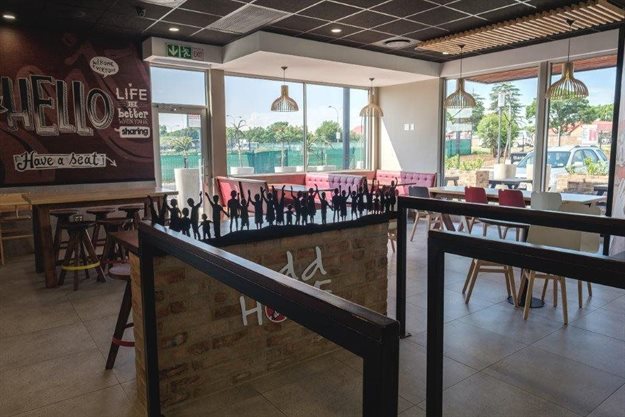
Related




Revealed: KFC's new “secret recipe”
8 Oct 2025


Draft regulations reveal big changes for SA's high-emission businesses
Robin van Wyk 9 Sep 2025
Top stories






“Designing, building and operating green buildings in accordance with global best practice – to drive reductions in energy consumption and GHG emissions – is something we have adopted wherever possible. At Yum! we have also created a green building standard called ‘Blueline’, which is aligned with LEED and encourages environmentally sustainable practices in our business," says Femi Enigbokan, chief development officer at KFC Africa.
“Our KFC Newmarket restaurant in Alberton is one such example. The restaurant, which opened in November 2016, is a LEED-accredited restaurant that has set a benchmark for us when it comes to the adoption of sustainable building practices, particularly when it comes to electrical and HVAC features. These features have set a standard that we can adopt or refer to as best practice in the development of our holistic green buildings in future.”

The LEED certification process for KFC Newmarket was undertaken by Solid Green Consulting. Gavin Westbrook of Solid Green explains that a strict process of waste, erosion and sedimentation control was implemented during construction – a process that proved to be new for the main contractor and the earthworks contractor, and therefore challenging in terms of compliance and documentation.
With a floor area of just under 310m2, the project uses 31.5% less water than a baseline building through the use of low flow fittings and efficient kitchen equipment. A third of the site is dedicated to vegetation, which does not have any permanent irrigation systems installed. The project had originally looked at using captured rainwater for irrigation, but xeriscaping turned out to be a more efficient design decision as it avoided the need for the water tanks, controls and pumps required for an irrigation system.

By using efficient lighting and HVAC systems, the project achieved a 33% energy saving over a baseline building. These systems were optimised using a ‘whole building’ design approach that included a highly reflective roof and shading to minimise solar heat gain. The project also has water tanks on the roof and a generator to ensure continuity of operations during service disruptions such as water-cuts or load-shedding.
“The operation of all the systems were verified through the appointment of an independent commissioning agent who checked the design and conducted on-site audits during the commissioning stages,” says Westbrook. “This process revealed that some of the lighting did not achieve the brightness levels required by both KFC and LEED. More and brighter lighting was added to the project after occupation and tested again to confirm compliance. This was one of the lessons learned, which will be applied to the base KFC design for other projects.”

The project has higher than baseline delivery of fresh air into the occupied spaces and utilises low VOC (volatile organic compound) finishes. Westbrook explains that an indoor environmental air quality plan (IEAQP) was implemented during construction to ensure the healthiest indoor air quality for occupants. The intention was to practice ‘good housekeeping’ during construction with several strategies including preventing dust and construction debris from accumulating in HVAC ducts; exhausting gas-fuelled construction equipment directly to the outside; storing VOC-containing materials away from absorptive materials; and keeping a clean work site by sweeping, wet mopping and using low-VOC cleaners.

LEED requirements also ensure that no smoking happens in the building or in the immediate vicinity. Westbrook says, “These are actually less rigorous than the legal requirement in South Africa, but the signage requirements are more stringent, so we needed to add more signage around the exterior of the building after completion in addition to the signage at the entrances, in order to achieve compliance.”
All the operational waste from the restaurant and kitchen will be sorted on site for recycling or disposal, including packaging, food waste and cooking oil.